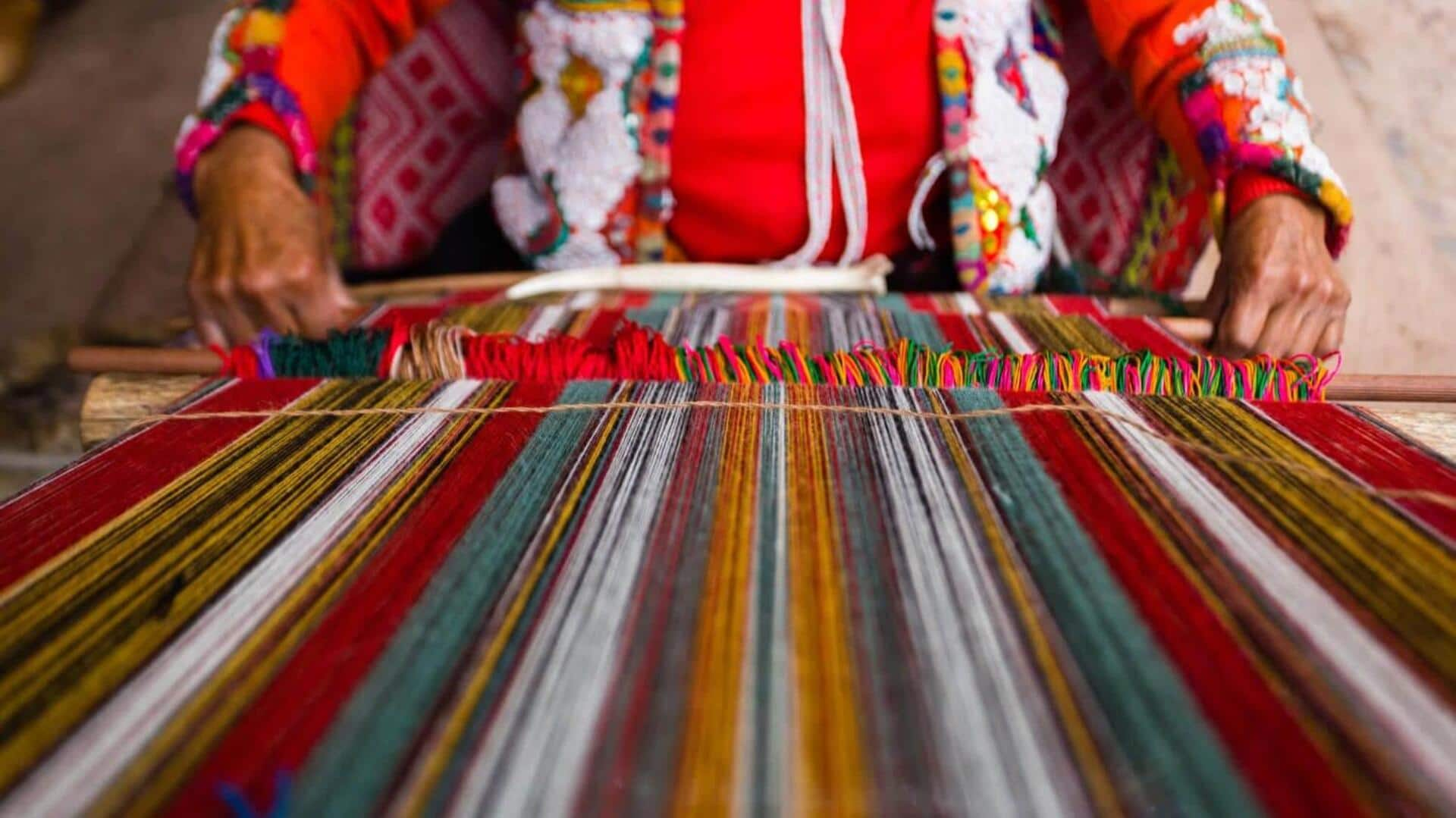
Surprising facts about Peruvian textiles
What's the story
Peruvian textiles are famous for their vibrant colors and intricate designs, but there's more to them than just aesthetics. These textiles are a reflection of the rich cultural heritage and history of Peru. From ancient techniques to the use of natural dyes, the textile traditions of Peru are as diverse as they are fascinating. Here are five surprising facts about these unique textiles.
#1
Ancient weaving techniques
Peruvian textiles also employ ancient weaving techniques that have been passed down through generations. The backstrap loom is a common tool used by artisans to create intricate patterns and designs. This method gives weavers control over the tension and allows them to create detailed imagery on the fabric. The skill involved in this technique is remarkable, as it requires years of practice to master.
#2
Use of natural dyes
Natural dyes are an integral part of Peruvian textile production. Artisans use plants, minerals, and insects to create a range of colors that are both vibrant and durable. Cochineal, for example, is an insect-based dye that produces rich reds and pinks. Not only does the use of natural dyes highlight environmental sustainability, but it also preserves traditional practices.
#3
Symbolism in patterns
The patterns woven into Peruvian textiles often carry deep cultural significance. Many designs symbolize elements such as nature or mythology important to indigenous communities. For example, some patterns may represent water or mountains, reflecting the geographical features of Peru's diverse landscape. Understanding these symbols provides insight into the values and beliefs of Peruvian society.
#4
Regional variations
Each region in Peru has its own distinct textile style, influenced by local resources and cultural practices. For example, while coastal communities may focus on cotton weaving due to its abundance, highland areas may rely more on alpaca wool for warmth and durability. These regional variations showcase the adaptability and creativity of Peruvian artisans.
#5
Economic impact on communities
Textile production plays an important role in supporting local economies across Peru's rural areas. By selling their handcrafted goods at markets or exporting them internationally, artisans can earn a sustainable income without leaving their homes or disrupting traditional lifestyles. The demand for authentic Peruvian textiles also helps preserve these age-old crafts for future generations to enjoy.